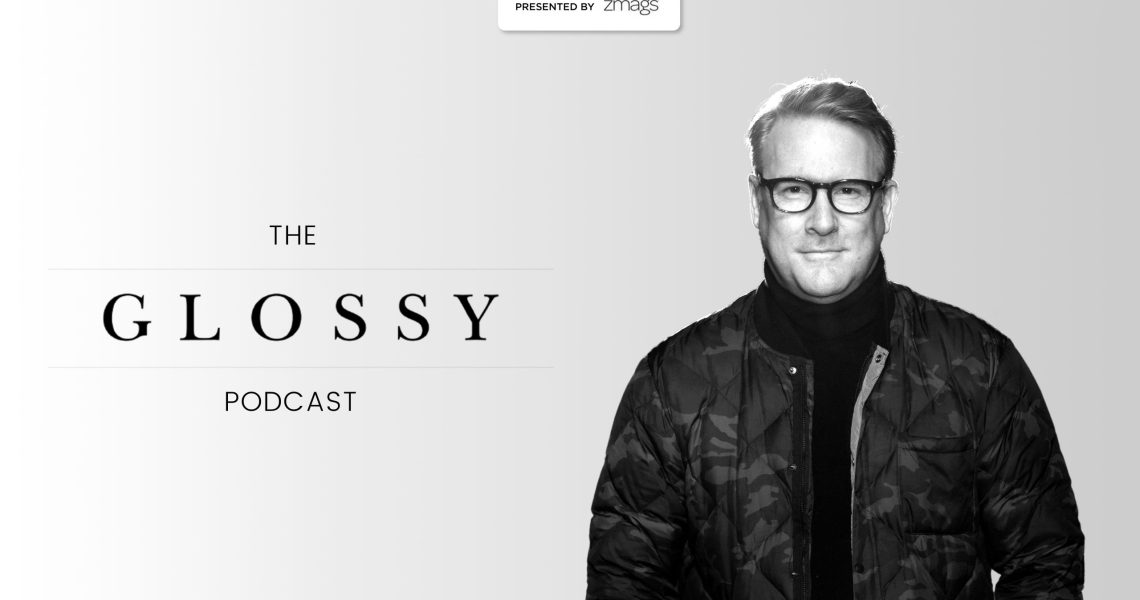Subscribe: Apple Podcasts | Stitcher | Google Play | Spotify
Todd Snyder is a master of collaborations.
“I’ve always looked at brands I want to work with, and they’re almost all originators in their space,” Snyder said on the Glossy Podcast. “They’re authentic and real, and American — and the first of their version.”
Snyder launched his namesake brand in 2011, after stints as a lead designer at Ralph Lauren, Gap and J.Crew. The brand now averages 2-5 collaborations per year, which account for 50% of the business and vary in length: Its first, with Champion, is eight years running. Most recently, the brand linked with L.L. Bean on a fashion collection and a lodge in Kennebunkport, Maine that features Snyder’s interior design.
“Part of our business plan is we look at: How do we expand our audience and also do things that are original, different?” he said. “I lean heavily into the design piece, just because I’m a designer by trade. It’s not just, ‘Let’s do some cool stuff, I want to slap my name on it.’ I really get into the weeds with the design team; that’s the part I love.”
The 30-year fashion industry veteran also discussed how his brand transitioned from wholesale to DTC, where it’s filling white space and why print is still alive.
Ad position: web_incontent_pos1
Here are a few highlights from the conversation, which have been lightly edited for clarity.
Old vs. new secrets to success in fashion
“We had the recipe for all the success you could think of, for a brand coming out of the gate: We had exclusive distribution at Bergdorf and Neiman [Marcus], GQ named us best new designer of the year, and we were named a CFDA menswear designer nominee. So we had all these great accolades, but at the end of the day, it didn’t tally up to a great [sales] number. Thankfully, we ended up pivoting to more of a direct-to-consumer model [in 2012], which has been the secret to our success.”
Differentiating during the DTC boom
“You saw the Bonoboses of the world and all these other direct-to-consumer businesses really focusing on key categories: ‘We’re going to reinvent the pan.’ Or, ‘We want to reinvent the untucked shirt,’ or whatever category it was. And I thought, ‘Wow, that’s really interesting’ — but the one they were missing was the entire lifestyle, and what a guy can wear to different events, and really being the authority on taste and what’s right. I always use the analogy of food: I like to go into restaurants where you know the chef started working as a dishwasher and worked his way all the way up to become the head chef. That, to me, is a great story. I look at apparel the same way. I don’t think most customers want to be buying a shirt from an investment banker who said, ‘Oh, I have an idea of how to reinvent a shirt.’ That’s where I’ve been like: We have white space there, and we can really fill that void — to be the authority in menswear.”
The power of a print catalog
“We’ve been doing about 10 catalogs a year. What a catalog does is it gives you a moment of pause. And it not only converts well — though it doesn’t convert better than digital — but it also definitely allows the customers who will ultimately be your bigger customers to really discover who you are. We’ve discovered that’s our secret, to really balance between digital ads and the catalogs that we ship out. Even if you become a customer through digital, you’ll get a catalog eventually, and that’s where people are like, “Oh, wow; I didn’t know they did all this.’ And that’s usually where a lot of customers become bigger customers. … Catalogs increase [shopping] frequency with existing customers, they bring [former] customers back into the brand, and they’re a good prospect tool. We try to do a quality catalog that people are going to want to put on their coffee table and show to their significant other and say, ‘I want you to look like this.’ That’s usually what happens. We get the partner saying, ‘Look at this brand.’ And getting someone to endorse it is key.”




